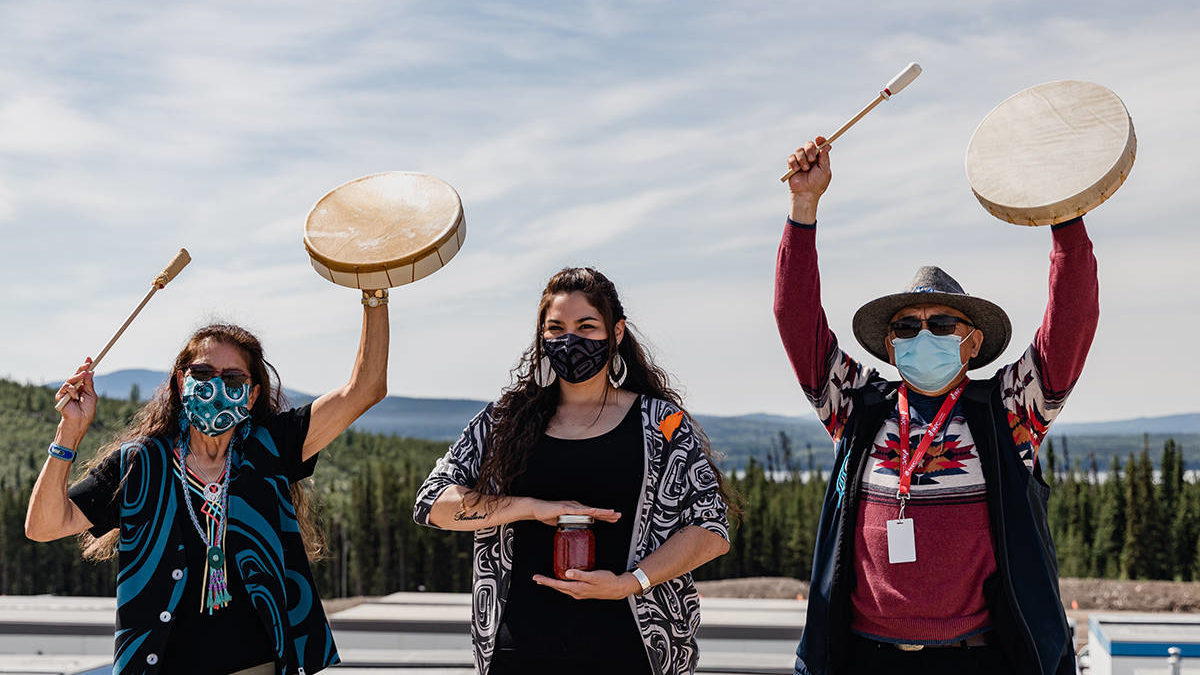Protesters illegally blocking access to workers on the Coastal GasLink pipeline in the interior of B.C. are ignoring the broad support for the project by Indigenous communities and how it will help fight climate change. Here are the facts.
Fact: Protesters are breaking the law
Protesters are defying an injunction by the B.C. Supreme Court ordering that Coastal GasLink and its contractors have continued safe access to the project in the area of the Morice River Bridge and two service roads near Houston, B.C.
This is in the same region where the group has illegally blockaded a worksite for nearly two months.
The injunction has been in place since January 2020.
Fact: Most Indigenous people on the route support Coastal GasLink
All 20 elected First Nations along the 670-kilometre pipeline route from Dawson Creek, B.C. to the LNG Canada terminal on the coast at Kitimat (including 5 Wet’suwet’en bands) support the project and have signed agreements that engage them in development.
Coastal GasLink says more than one-third of work so far has been conducted by Indigenous people, with $825 million in contracts awarded so far to Indigenous and local businesses.
Fact: Indigenous people are helping shape the Coastal GasLink project
Coastal GasLink is engaging Indigenous communities in the construction process. The project has completed 19 traditional land use studies with local Indigenous communities, which are used to refine project planning and promote respect for the land and the people along the pipeline route.
There are currently nine Wet’suwet’en community members participating as construction monitors and community liaisons with the project, out on the route each day observing and reporting on construction activities, Coastal GasLink says.
Additionally, four Wet’suwet’en community workforce accommodation advisors live and work in the project’s lodges, sharing Wet’suwet’en culture with the workforce and helping build healthy connections with communities.
Coastal GasLink says these programs could be expanded further to assist with access and other issues that have arisen during construction.
The project has been “exceptional” in its relations with First Nations people, says Layne Boucher, co-owner of Houston, B.C.-based Getumdone Contracting Ltd.
“They really listen and I think they care, and they’re willing to incorporate the needs and concerns of local Indigenous people into their project planning and strategy.”
Fact: Canadian natural gas helps fight climate change
Coastal GasLink will feed natural gas to LNG Canada, the country’s first liquefied natural gas (LNG) export terminal. Both projects are now over 50 per cent complete.
These Canadian projects, and the next ones, can’t be completed soon enough.
Right now, Europe and Asia are facing escalating shortages of natural gas that Canada could help fill, with an LNG terminal up and running.
Global LNG demand is forecast to double by 2040 as the world’s population grows and develops and as countries seek less dependence on coal.
Switching from coal to natural gas for electricity generation reduces emissions by 50 per cent on average, according to the International Energy Agency (IEA).
Switching to Canadian natural gas specifically could reduce emissions by up to 62 per cent, according to a June 2020 study published in the Journal for Cleaner Production.
“LNG is not a 100 per cent solution to our climate problem, but it can significantly help to reduce emissions if it replaces coal,” IEA executive director Fatih Birol said earlier this year.
“Canada being a reliable supplier to Asia is an important advantage [compared to] other countries.”
The unaltered reproduction of this content is free of charge with attribution to Canadian Energy Centre Ltd.
